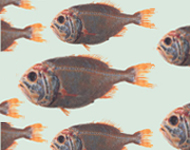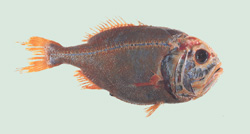Australia adds Orange Roughy to threatened species list
9 November 2006
The orange roughy fish species will be added to the threatened species list under Australian environment law, the Australian Minister for the Environment and Heritage, Senator Ian Campbell, announced today.
Orange roughy is Australia's first commercially harvested fish to be listed under the Environment Protection and Biodiversity Conservation Act 1999.
Orange roughy will be listed as conservation dependent, and will be managed subject to a conservation programme to be implemented by the Australian Fisheries Management Authority (AFMA).
“Scientific advice to me indicated that orange roughy is under considerable pressure and protection under environment law is needed if the species is to have any chance of long-term survival,” Senator Campbell said.
The conservation programme will protect orange roughy from over-fishing, in part by prohibiting targeted fishing in fishing zones.
Catch limits at the Cascade Plateau will be set at levels that will conserve the species. AFMA has already announced a reduction in the zone’s 2007 total allowable orange roughy catch.
“My decision to add the orange roughy to the threatened species list follows careful consideration of the scientific information, as well as extensive consultation with experts and the public,” Senator Campbell said.
Orange roughy are found in south-eastern and south-western Australia, the Great Australian Bight and around Tasmania, and have been one of the primary species caught in Australia’s south-east fisheries since the late 1980s. |












 Agreement to restrict South Pacific high seas bottom trawling - is it enough?
Agreement to restrict South Pacific high seas bottom trawling - is it enough?
